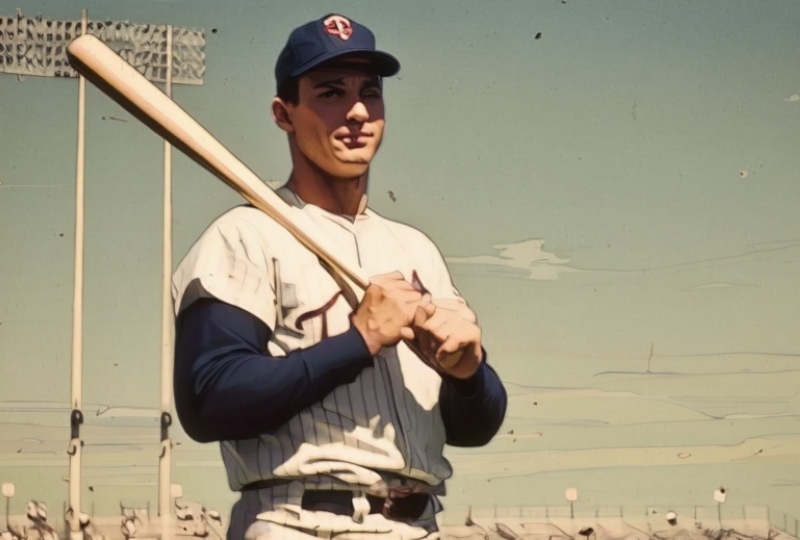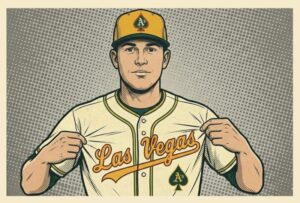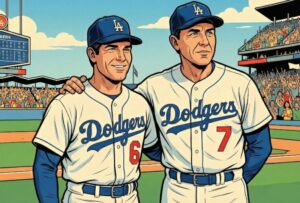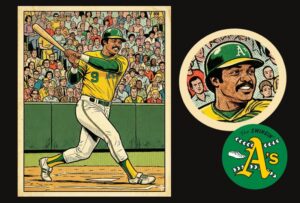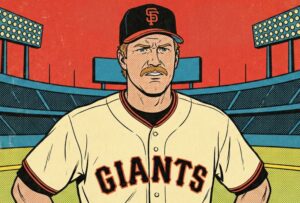When you think of the Minnesota Twins All-Time Team, you may immediately identify Rod Carew, Harmon Killebrew, and Kirby Puckett. But you should also remember a five-tool outfielder who started as American League Rookie of the Year in 1959, and starred for the Twins when that team won its first pennant.
Bob Allison hit at least 20 home runs eight times. He earned MVP votes in three separate seasons. He rates as one of the best Minnesota Twins of all-time.
RELATED: Top 100 Right Fielders of All-Time
In the days when a young prospect could sign with any team, before the amateur draft, the wealthy, successful clubs were not always the first choice. The reason was opportunity: a young player might have a long wait to get into the lineup with the Yankees or Dodgers, for example. Subsequently, some of the most talented prospects signed with lesser teams. Such was the case with Bob Allison, a sublime young player who played football and baseball at the University of Kansas, and shunned an offer from the Yankees to sign with the Senators.
Allison was B.M.O.C. (Big Man on Campus) in Kansas for a reason: he was the star fullback for the Jayhawks football team and played one outstanding season for the baseball team where he showed off his throwing arm in the outfield. “When he was 18,” one coach said, “he could throw out any runner in the big leagues.” Allison was 6’3 and 200 pounds, a chiseled, handsome young man and a five-tool player on the diamond.
When the 1959 season commenced, Allison was the starting right fielder for the Senators. He played so well that within a few weeks his presence shook up the lineup. The team traded center fielder Albie Pearson, who was about half an Allison, and gave Bob his job. The man he beat for the right field job, Jim Lemon, was moved to left field, and left fielder Roy Sievers was switched to first base. Faye Throneberry ended up winning the right field job. The other major change was the addition of Harmon Killebrew to the lineup at third base. Killebrew was a bonus baby who was finally ready for The Show at age 22.
The changes helped the offense: the 1959 Senators scored 66 more runs than they had the previous season. Killer led the league with 42 home runs, Lemon hit 33 and drove in 100 runs, Allison hit 30 homers, and Sievers smacked 21. But the Senators still finished seventh in runs scored in an eight-team league, mostly because their lineup was so impatient and reliant on the home run. Still, that season marked a pivotal transition in franchise history. Two years later the Griffith family moved the team to Minneapolis, attendance jumped by half a million, and in 1962 they won 91 games and finished in second place.
Allison was the 1959 Rookie of the Year, and he was one of the better players in the league in the 1960s, though since he was tucked away in the Twin Cities, most people didn’t know it. Five times from 1962 to 1968, Allison was in the top ten in the AL in on-base plus slugging, and in 1963 he was first. Allison was a three-time All-Star, received MVP votes in three seasons, while being one of the most exciting players in the league. “When he runs down the line from home plate I can hear the ground shake,” Twins’ coach Ellis Clary said. Team owner Calvin Griffith said “When I think of Bob Allison, I think of brute strength.”
Right fielders play with their backs to the most rowdy fans in the ballpark, and often they become folk heroes. In the early days of baseball, most parks did not have grandstands in the outfield, if a big game was scheduled, the areas in the outfield were roped off to allow for more seating or standing room. Some of the biggest games of the early twentieth century were played with temporary roped off seating areas just behind the outfielders. Sam Crawford once pushed back a rope, nudged aside a police officer, and made a catch in a game in Detroit where hundreds of fans were standing in the outfield. What does this have to do with Allison? Well, at Metropolitan Stadium in Minneapolis, Allison was the favorite of the fans in the bleacher sections of right field. As stated above, Allison was handsome and athletic: he drew female fans like hamburgers to Wimpy. He was the first player on the team to make the Twin Cities his year-round home, a fact that wasn’t lost on the locals. He also gained notoriety for his habit of bouncing middle infielders with his hard slides at second base. The fans called Allison “Mr. Downstairs” and Killebrew “Mr. Upstairs,” because Bob hit blistering line drive home runs and Killer hit soaring homers.
In Game Two of the 1965 World Series, Allison (playing left field) made one of the most amazing catches in the history of the Fall Classic. In the fifth inning with a runner on first, Jim Lefebvre hit a sharp liner toward the line. Allison got a great jump, ran full speed to his right, dove, and caught the ball with a backhanded grab a few inches from the ground. Allison slid into foul territory, came up quickly, and fired the ball to the infield to keep the runner from advancing. “It was the greatest catch I’ve ever seen,” Killebrew said.
Hand, wrist, and knee injuries gradually sucked playing time from Allison, and he played his final games in the 1970 Playoffs when he was 36 years old. Manager Billy Martin liked Allison, and considered him the leader of the team. He offered Bob a position on his coaching staff, but Allison declined and took a sales position in the Minneapolis area.

